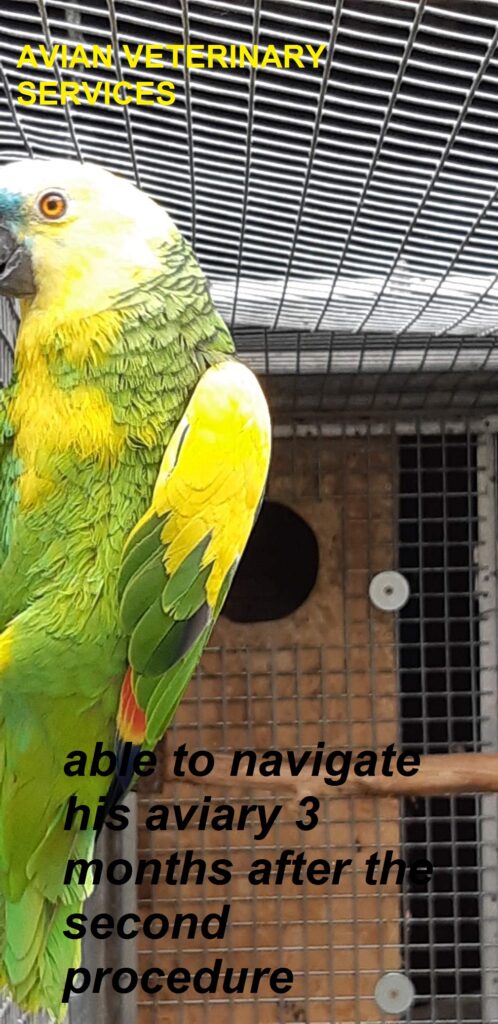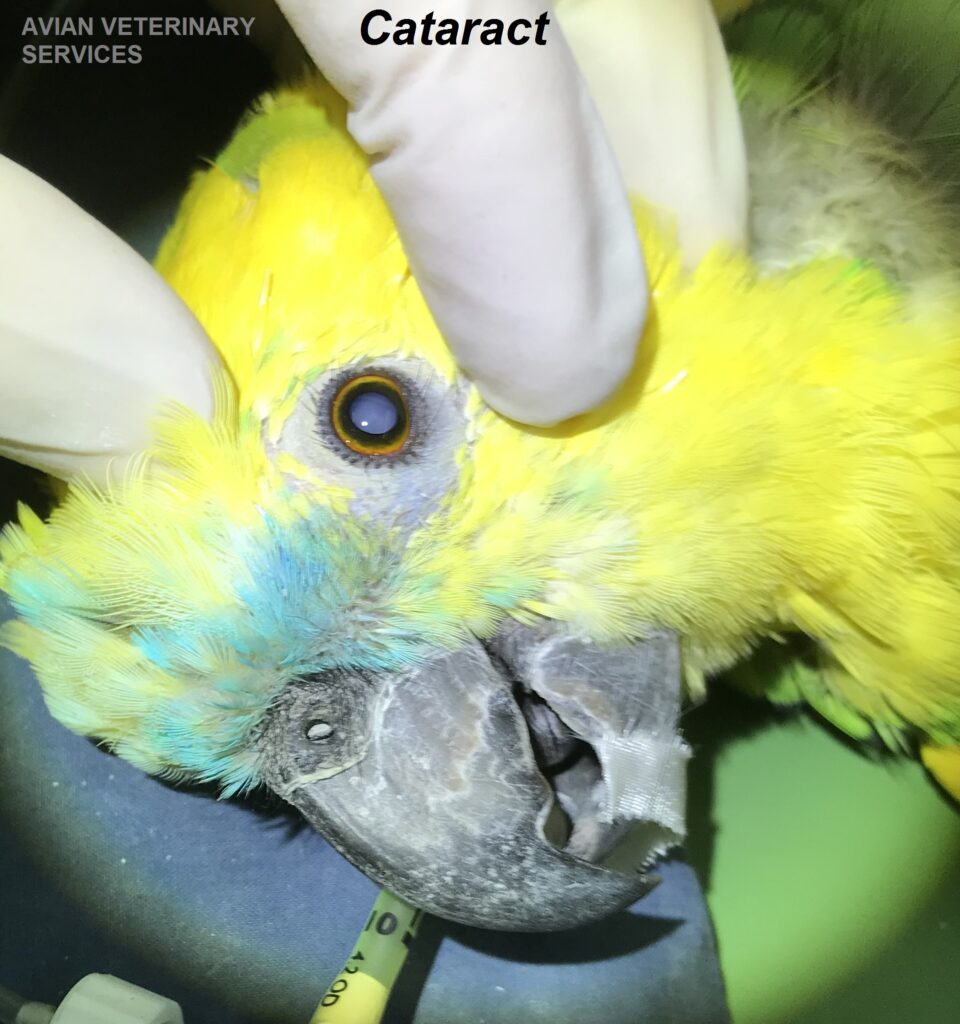 Every 2 years AVS is represented at the International Conference of Avian, Reptile and Exotic animal medicine (ICARE) to catch up with friends/colleagues and keep up to date with the latest developments in this particular branch of veterinary medicine.
Every 2 years AVS is represented at the International Conference of Avian, Reptile and Exotic animal medicine (ICARE) to catch up with friends/colleagues and keep up to date with the latest developments in this particular branch of veterinary medicine. 
These conferences are generally held at a variety of European locations with this year’s having been planned in Budapest. Sadly, due to the COVID situation, it was decided that rather than postpone/cancel this very important event in the Exotic veterinarian’s calendar to create a ‘virtual conference’ online. 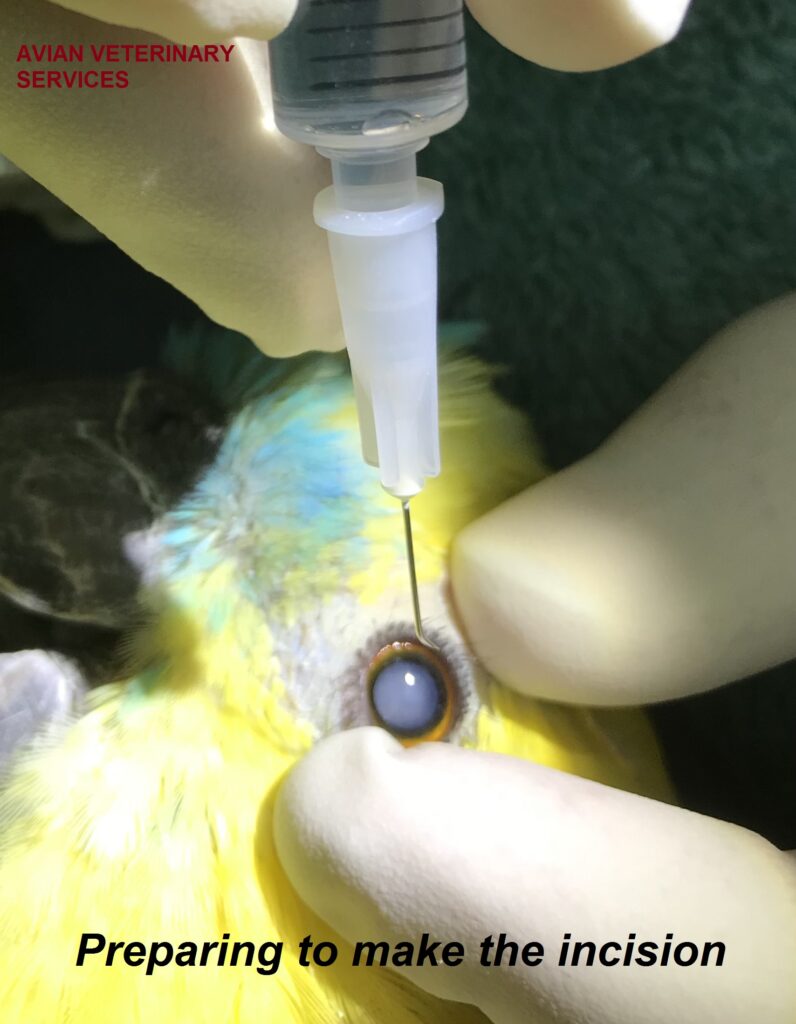
After a badly timed technical glitch, when due to a flood at Gadbrook, our internet went down 1/2 hour before he was due to present live from his consulting room to the international audience, thanks to Carli’s technical genius we managed to get back online with minutes to spare and Richard was able to present his case report; ‘Cataract removal in a blue fronted amazon using a modified fishhook technique’ 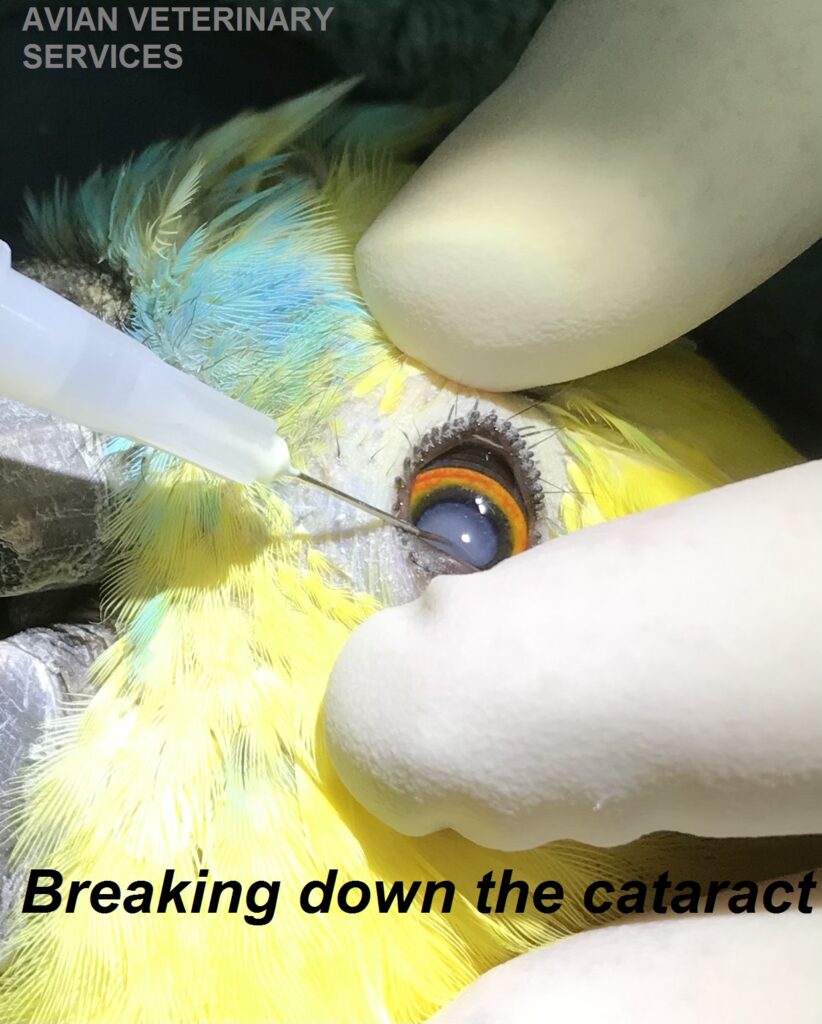
The lecture described the treatment of a young amazon who was rendered blind by assumed congenital cataracts. 
We have previously referred cases, in both parrots and birds of prey, to a specialist veterinary ophthalmologist with the treatment of choice being a procedure called ‘phacoemulsification’ using an extremely expensive piece of kit and operating microscope and as such costs approximately £3-4000 an eye, which was not possible in this case.
Using a slightly less ‘hi-tech’ technique, based on that developed by an ophthalmologist in Nepal for use in people suffering with cataracts in remote villages where resources were limited, we were able to successfully remove the offending cataracts and restore his sight. 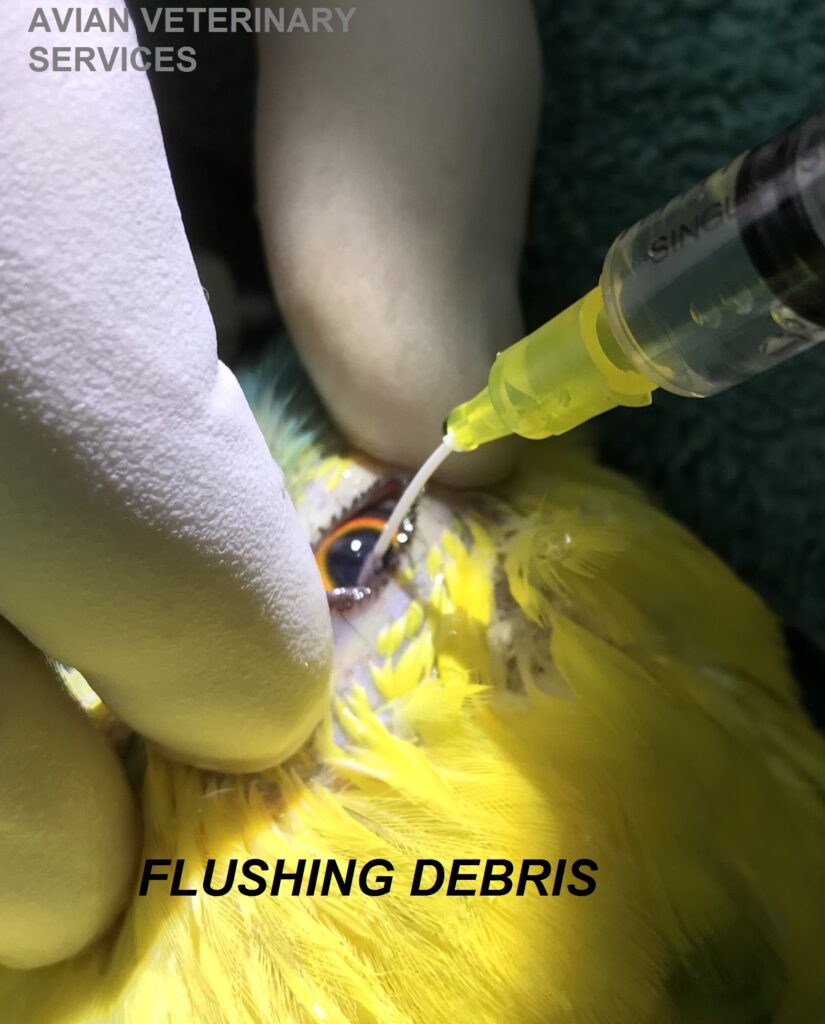
Under general anaesthesia and following dilation of the pupil, a tiny hypodermic needle was bent at the tip and used to enter the anterior chamber of the eye, incise the capsule of the lens, and break down the cataract manually using a rotating action. 
A saline filled syringe was then attached to the needle and the cataract material gently flushed out through a lateral corneal incision that was ultimately sutured and globe re-inflated.
When the bird presented for his check-up following surgery, we were all extremely excited that he could clearly see us again, so much so that the owner requested we operate on the other eye, which thankfully also went to plan. We are now 2 years down the line and the owner only very recently sent us a picture of him enjoying life to the full in his aviary!
Under certain circumstances, this procedure which may be carried out in the general practice setting, at least offers the clinician a viable ‘Plan B’ and was ultimately successful in this case.

